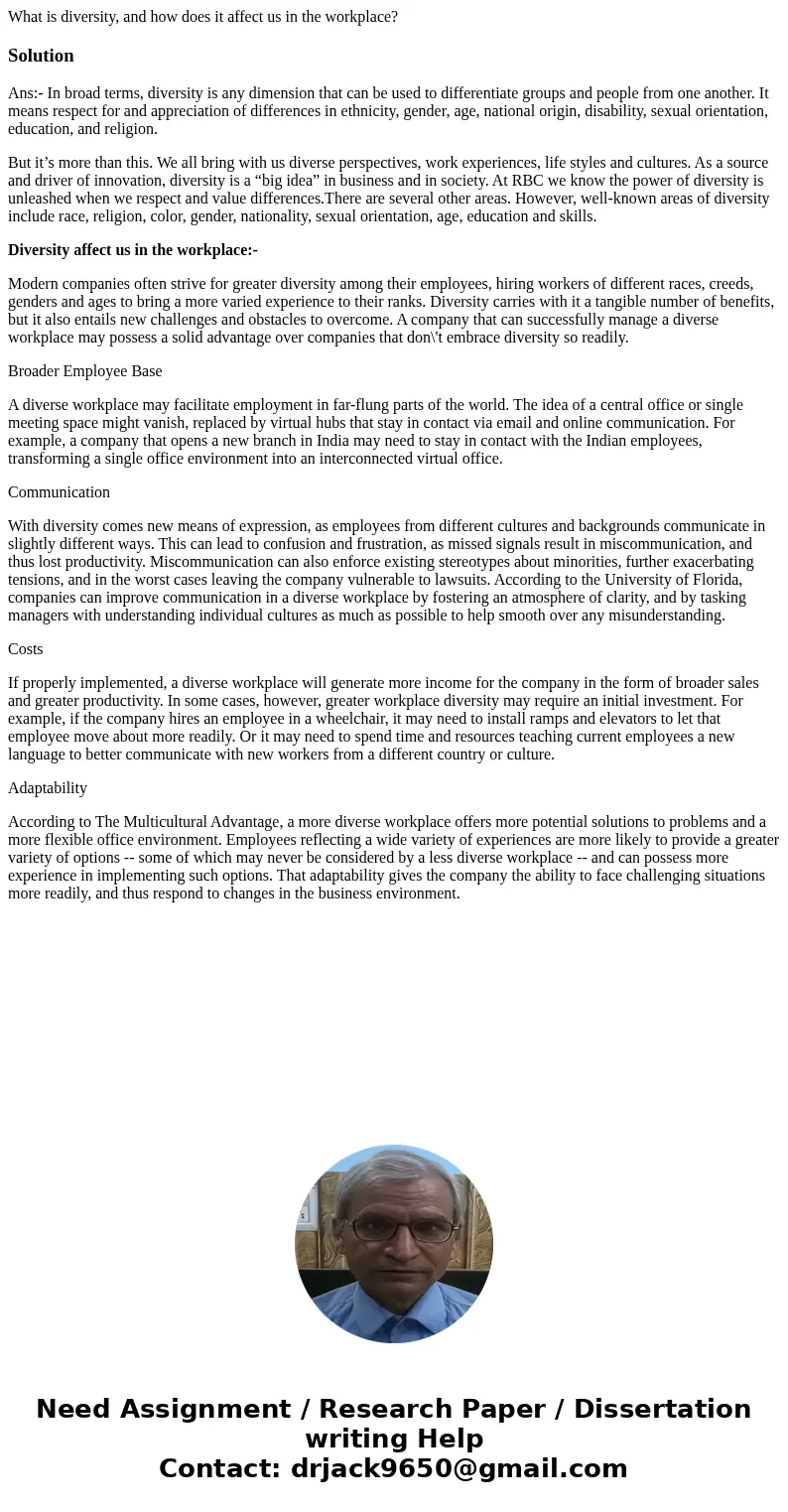What is diversity and how does it affect us in the workplace
What is diversity, and how does it affect us in the workplace?
Solution
Ans:- In broad terms, diversity is any dimension that can be used to differentiate groups and people from one another. It means respect for and appreciation of differences in ethnicity, gender, age, national origin, disability, sexual orientation, education, and religion.
But it’s more than this. We all bring with us diverse perspectives, work experiences, life styles and cultures. As a source and driver of innovation, diversity is a “big idea” in business and in society. At RBC we know the power of diversity is unleashed when we respect and value differences.There are several other areas. However, well-known areas of diversity include race, religion, color, gender, nationality, sexual orientation, age, education and skills.
Diversity affect us in the workplace:-
Modern companies often strive for greater diversity among their employees, hiring workers of different races, creeds, genders and ages to bring a more varied experience to their ranks. Diversity carries with it a tangible number of benefits, but it also entails new challenges and obstacles to overcome. A company that can successfully manage a diverse workplace may possess a solid advantage over companies that don\'t embrace diversity so readily.
Broader Employee Base
A diverse workplace may facilitate employment in far-flung parts of the world. The idea of a central office or single meeting space might vanish, replaced by virtual hubs that stay in contact via email and online communication. For example, a company that opens a new branch in India may need to stay in contact with the Indian employees, transforming a single office environment into an interconnected virtual office.
Communication
With diversity comes new means of expression, as employees from different cultures and backgrounds communicate in slightly different ways. This can lead to confusion and frustration, as missed signals result in miscommunication, and thus lost productivity. Miscommunication can also enforce existing stereotypes about minorities, further exacerbating tensions, and in the worst cases leaving the company vulnerable to lawsuits. According to the University of Florida, companies can improve communication in a diverse workplace by fostering an atmosphere of clarity, and by tasking managers with understanding individual cultures as much as possible to help smooth over any misunderstanding.
Costs
If properly implemented, a diverse workplace will generate more income for the company in the form of broader sales and greater productivity. In some cases, however, greater workplace diversity may require an initial investment. For example, if the company hires an employee in a wheelchair, it may need to install ramps and elevators to let that employee move about more readily. Or it may need to spend time and resources teaching current employees a new language to better communicate with new workers from a different country or culture.
Adaptability
According to The Multicultural Advantage, a more diverse workplace offers more potential solutions to problems and a more flexible office environment. Employees reflecting a wide variety of experiences are more likely to provide a greater variety of options -- some of which may never be considered by a less diverse workplace -- and can possess more experience in implementing such options. That adaptability gives the company the ability to face challenging situations more readily, and thus respond to changes in the business environment.

 Homework Sourse
Homework Sourse